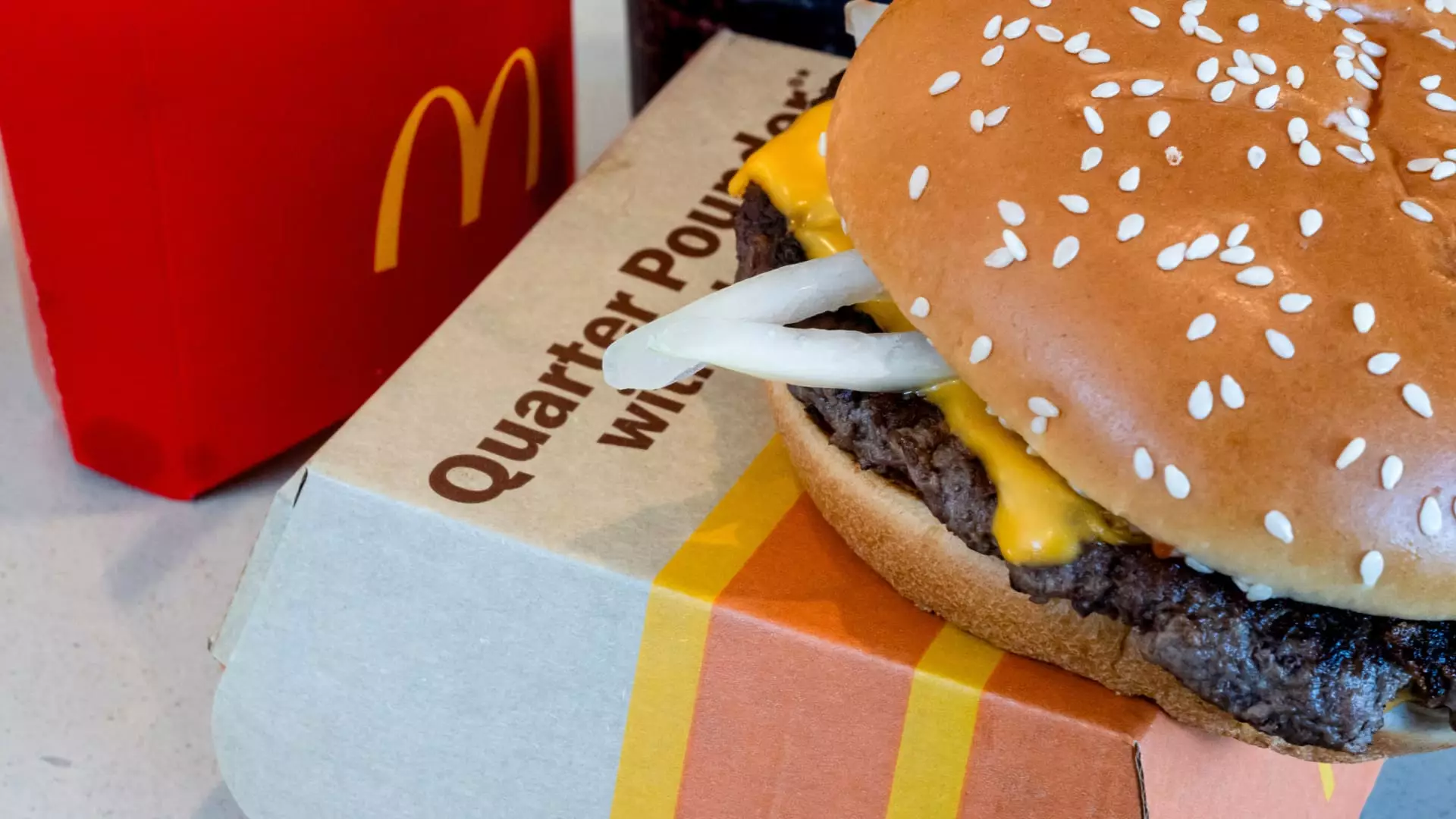In recent days, a significant E. coli outbreak associated with McDonald’s Quarter Pounder hamburgers has emerged, marking a worrying trend in food safety in the fast-food industry. The Centers for Disease Control and Prevention (CDC) reported 75 cases across 13 states, with 22 individuals hospitalized and one death confirmed in an older adult from Colorado. This ongoing situation raises critical questions about food safety standards and the potential risks consumers face when dining at fast-food chains.
Given that E. coli infections can lead to severe complications, such as hemolytic uremic syndrome, which can ultimately result in kidney failure, the seriousness of this outbreak cannot be overstated. While a broad spectrum of ages—from 13 to 88—is affected, the lack of thorough testing for E. coli suggests that the reported figures may only scratch the surface. Many people might recover without seeking medical help, leading to the possibility that the outbreak’s scope is far larger than currently documented.
As investigations unfold, health officials are focusing on the slivered onions used in the Quarter Pounder as potential sources of contamination. McDonald’s has taken preemptive action by removing these onions from its supply chain and halting their distribution in affected regions, including Colorado, Kansas, and parts of Idaho, among others. This step indicates the company’s recognition of its responsibility to prioritize customer safety.
However, the revelation that the onions supplied by California-based Taylor Farms are implicated in contamination raises broader questions about the food supply chain. The subsequent recall of raw onion products underscores the necessity of stringent quality control and transparency within the food industry to safeguard public health. The involvement of other fast-food chains, such as Burger King and KFC, in pulling onions from their menus further highlights the outbreak’s extensive reach and the collective efforts required to mitigate risks.
The impact of the outbreak on McDonald’s finances has been notable, with shares dropping 2% following the CDC’s update, and a total decrease of 6% since the outbreak was first reported. Fast food chains like McDonald’s thrive on consumer trust, and incidents such as this can erode that confidence. With a core menu item like the Quarter Pounder bringing in billions annually, the financial stakes are substantial.
As the company prepares to release its third-quarter earnings, speculation about the effect of the outbreak on consumer traffic looms large. McDonald’s has acknowledged that it is too soon to assess the full impact on sales and customer engagement. The recent trend of price-sensitive consumers opting for value meals showcases another layer of complexity for the company, as maintaining profitability becomes increasingly challenging amid fluctuating market dynamics.
In light of this incident, McDonald’s must be vigilant in reinforcing customer trust. Health officials further complicate this issue by indicating that the outbreak might extend beyond reported cases, leaving consumers uncertain about the safety of their food choices. Public perception is a fragile construct, especially for an iconic brand like McDonald’s, which navigates the thin line between convenience and potential health risks.
Analysts have indicated that, barring more severe repercussions, the brand’s image might endure minimal long-term damage due to a similar E. coli outbreak linked to Wendy’s two years ago. Nevertheless, the fast-food giant must engage in rigorous consumer outreach and transparency regarding its food safety measures during this crisis. Demonstrating a commitment to their patrons’ well-being is paramount for McDonald’s, as negligence could not only lead to more health incidents but also threaten their longstanding reputation.
The McDonald’s E. coli outbreak serves as a stark reminder of the challenges faced by food service industries in maintaining safety protocols and consumer trust. The incident highlights the urgent need for improved food safety standards and more effective communication regarding risks both from the suppliers and the corporations themselves. As the outbreak continues to unfold, the focus must shift from immediate responses to long-term strategies ensuring that fast food restaurants can confidently provide safe dining experiences for all customers.

